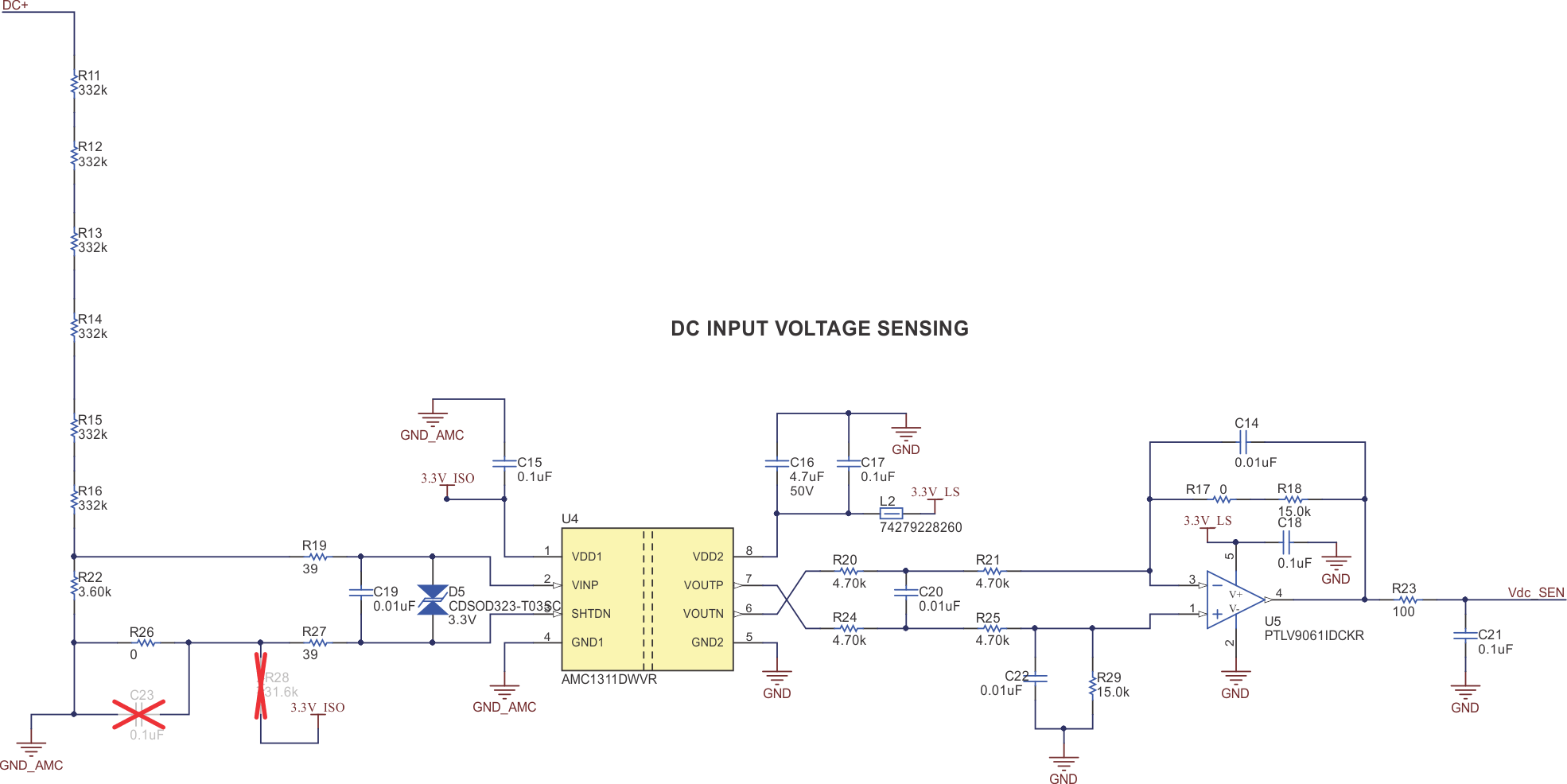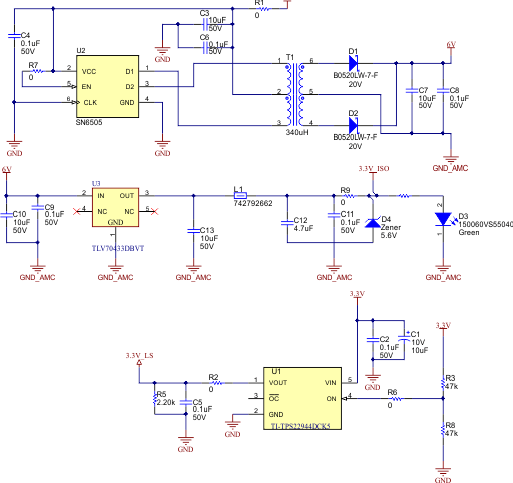JAJU732C June 2019 – July 2022
- 概要
- Resources
- 特長
- アプリケーション
- 5
- 1System Description
- 2System Overview
- 3Circuit Description
- 4Hardware, Software, Testing Requirements, and Test Results
- 5Design Files
- 6Related Documentation
- 7Terminology
- 8About the Author
- 9Revision History
3.2.1 Primary DC Voltage Sensing
The design implements overvoltage protection by measuring the primary and secondary DC voltages. These voltages are scaled down using a resistive divider network and fed to the MCU using the AMC1311 reinforced isolation amplifier and the TLV9061. The output of the TLV9061 can directly drive the ADC input or can be further filtered before processed by the ADC.
Figure 3-2 shows the primary voltage sensing circuit. The maximum primary input voltage to be sensed is 800 V and is scaled down by a resistor divider network to 1.44 V, which is compatible to the 2-V input of the AMC1311. Figure 3-2 shows six 332-kΩ resistors and one 3.6-kΩ resistor used to drop the primary voltage signal. The signal is then processed by the TLV9061, which converts it in the range of 0 V to 3.3 V as required by the ADC.
 Figure 3-2 Primary Side DC Voltage Sense
Figure 3-2 Primary Side DC Voltage SenseFigure 3-3 shows the isolated power supply circuit for powering the AMC1311. An isolated 3.3-V supply is needed to power the primary side of the AMC1311. This is accomplished through an SN6505 driving a push-pull transformer, which creates an isolated reference for the primary side. This isolated voltage is then regulated to 3.3 V using the TLV70433. The secondary side of the AMC1311 is powered with 3.3 V directly from the system power tree and is referenced to the controller GND.
 Figure 3-3 Isolated Power Supply for Primary
Figure 3-3 Isolated Power Supply for Primary